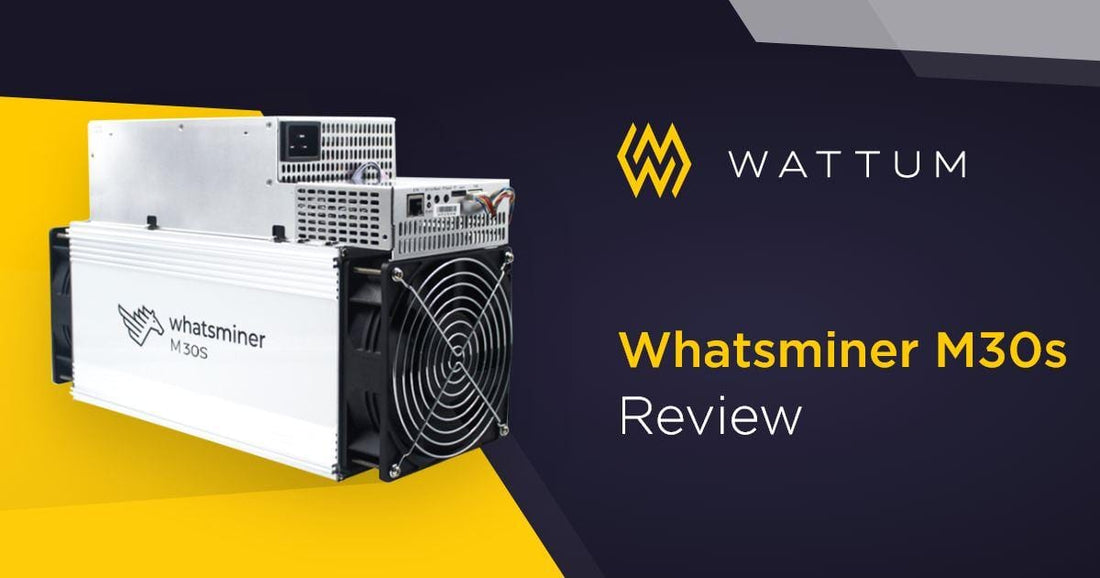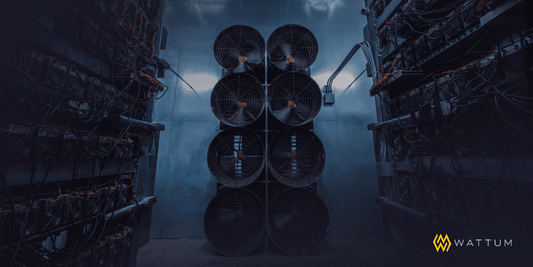Bitmain has dominated the ASIC market for years, making alternative manufacturers almost irrelevant. However, with the recent power struggle between Bitmain’s founders, and improved miners being manufactured by other companies, more offers are beginning to become more attractive.
Wattum recently received a batch of Whatsminer M30s from MicroBT. After several tests, we are excited to share our review. First and foremost, here is what the miner looked like upon arrival:


Hardware Review
With the amount of devices we have to disassemble, repair, air-blow, and more every day, we were pleasantly surprised that there were no defects or problems with the miners. After testing the devices, we decided to disassemble them to see how the inside was arranged. Fortunately, the devices were not sealed, giving us the ability to look at all of the components in detail.
When first looking at the miner, we could see the typical layout consisting of a cooling system, power supplies, and the main unit hashboards. Before moving any further we decided to go on MicroBT’s official website. Here we were able to find full instructions on disassembly and assembly of the M30s.
Radiator Solutions
Since Bitmain’s 9th series, the company has had several difficulties with radiator solutions. The Whatminer M30s, in contrast, has one-piece radiators with thermal breaks and thermal paste, eliminating this issue.
Online Board Status
A great way to see the status of the online board is through the slots. The indicators on each blade can be seen easily without even having to connect through a web-interface.

Software
MicroBT released its own solution for complex maintenance of its devices - WhatsminerTool. You can easily download it from their website. This program is similar to BTC Tools, but it’s customized for Whatsminer.

Our first impressions of the program were very positive. It had a sleek design that was easy to use. Conveniently, the software provides all of the error codes, eliminating the need to look into logs. There are several datasheets on them, along with a table of error codes containing possible solutions to issues.
In addition to the usual hashrate data for each individual hashboard, there was also pool data and error information on the miner statistics page.


There were also performance profiles in the web interface. The default is Normal, but you can also select Low or High.

This solution allows you to search for devices in the network in a given range, and apply various settings at once to a group of devices. Some examples are changing the pool, workers, and other parameters.
Temperature Monitoring
Like all other ASICs, overheating can be a major issue depending on the environment. The miner’s temperature is displayed in the logs, and if too hot it will automatically shut down. With the Bitmain 17 series and M30s all in one room, we found that the M30s maintained a stable temperature, while the nearby Bitmains overheated heavily, and generally had a noticeably large temperature variation depending on the time of day.
Final Thoughts
When comparing the M30s equipment to Bitman, the WhatsMiner’s hardware components were superior.
Typically each batch of Bitmain we tested in the past had a high percentage of units with non-functioning hashboards, even those that came under warranty. WhatsMiner, on the other hand, provided much better reliability results. Our first batch statistics were 40 out of 40 working units. Though, we still need to test that the quality does not deteriorate over time, as this often happens.
Performance
Of course the most important aspect of any miner is its performance. With 40 devices at our disposal, we found the following results:
Average consumption - 3550W
Average hash rate (on the High profile) - 94.25TH
Average efficiency indicator - 37.66J/TH
Maximum hash rate - 96.05TH
At the same time, the consumption was - 3627W
Minimum hash rate - 92.9TH
At the same time the consumption was - 3504W
Best performance demonstration - 37.03J/TH
Overall the M30s miners from MicroBT made a great impression. We would highly recommend them, as they did not cause any problems during usage, and had an extremely low reject rate compared to the popular 17 series from Bitmain. In the future we hope to get newer models from this company, after which we will prepare another overview.
Buy your brand new M30s today before BTC spikes again. Visit our Equipment Marketplace Telegram group, or Store to get the best prices on new and used miners!



